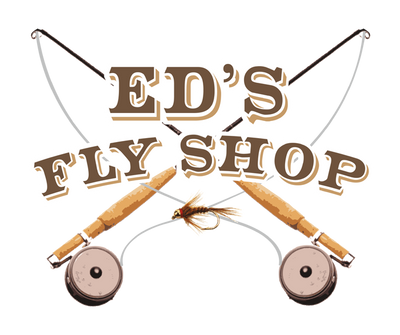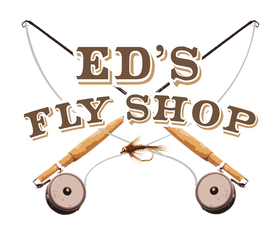Choosing the Right Fly Tying Vise
So you’re digging this fly fishing thing. A significant other or friend showed you the sport and over time you have honed the skills needed to catch a few fish on your own, and disappearing into the wilderness to throw a drift consumes your thoughts, yeah you’ve got the bug. There is, however, another accomplishment which brings fly fishing full circle - catching a fish on a fly that you tied yourself. There’s something about collecting a stream sample bringing it home and twisting your own creation from a variety of materials to catch a fish which gives the sense of mastery and confidence not to mention just plain fun to do! But where do you start? The world of fly tying can be overwhelming when first introduced and having a general sense of direction can save you a lot of money with your initial investment. Below is a list of tips and questions to consider when buying your first vise - the most important tool on your bench.
Try It First
There’s no doubt fly tying is a patience game. It’s a skill which must be learned with a lot of success and failure, and is one which takes time. There’s no substitution for time on the vise. Before making the initial investment into materials, vise, and tools, try it first. Visit a fly shop and inquire about a class, or simply ask to be shown a demo of a fly being tied, and possibly a free sit down just to feel the thread on the hook and maybe a quick fly tutorial. Having a good mentor and someone to answer your questions is huge, especially as you advance in the craft, it’s endless.
Choosing the Right Vise
The vise, without question is the most important tool to start this adventure into fly tying. When you search fly tying vises online you are instantly inundated with a river of information and many different styles and sizes. Right off the bat the choice is hard, but let’s narrow it down a bit by answering a few questions making it easier for you to choose. When looking at vises you will notice there are two distinct different styles, rotary versus conventional. The rotary function allows the tier to spin the fly 360 degrees and holds the fly level aiding in wrapping materials around the hook shank, a common step in most fly patterns (rotary vise below).

The conventional style vise is typically set at a 45 degree angle and simply holds the hook; materials are hand wrapped around the hook shank (conventional vise below).

It’s a matter of comfort first and what feels natural. If you have the option to try both side by side it’s a great way to quickly figure out what feels good to you. My personal preference is to tie on a conventional vise, it’s what comfortable to me and less complicated. With a conventional vise I also find it very nice to rely on the 45 degree clamp as a rest for my hand when mounting materials. It keeps me very stable and accurate especially for the smaller patterns. I can certainly see where rotary comes into play as well, watching an experienced tier on rotary is very impressive. The ability to quickly wrap materials with minimal hand movement and speed definitely has its perks. Some tiers own both styles for the different patterns and sizes of flies they tie. Whatever style of vise you choose they both have great qualities and are efficient. Once you’ve made the choice between rotary and conventional it’s time to look at the market and a few pointers can help you avoid having to make more than one investment in a vise. It’s important to get a vise which will last, replacing vises due to poor manufacturing and cheap parts requires you to re-familiarize yourself on the vise, especially if you switch brands, they are all a little different. With that being said you could spend anywhere from $20.00 to $700.00 on a fly tying vise, a good reason to read this blog first. Here’s couple things to remember when shopping around for your new vise.
Touch It, Feel It: If you buy your vise at a fly shop or online make sure you have tested it out first for comfort and size. Don’t just rely on brand name and price to point you in the right direction. There are a lot of companies out there producing a great product, find the one which fits you.
Avoid Cheap Parts: A fly tying vise will see its abuse over time and owning a vise produced and assembled with quality parts is very important. In order to properly secure a hook in a vise, powerful jaws are required (fly tying vise jaws below).

The jaws need to be strong enough to hold the hook and keep it from moving as the tier puts torque on the hook shank when tying a fly. Therefore it is best to avoid any plastic parts. Every part on a vise in my mind requires a bit of strength to benefit stability and overall function. A quality vise will be comprised of all metal pieces from the base to the jaws including small pins, adjustment knobs, and lever to operate the jaws.
Test the Jaws: If you’ve found a model which suits you make sure to test the jaws with a number of different sized hooks before you purchase the vise. The most annoying part of fly tying is when your jaws will not securely hold the hook. Some vises will come with a set of interchangeable jaws for different sized hooks. If this is the case try each of them out and make sure the function of changing the jaw is smooth. If the vise has a single set of jaws practice loading different sized hooks and playing with the adjustment knobs on the vise. A good way to test this is by inserting the hook in the vise and clamping it in. Then take your index finger and put some pressure on the eye of the hook both down and up. If the hook budges and you have to re-tighten the jaws this could be an issue going forward. If the hook bends and feels like it’s going to break without moving then you can bet it’s solid jaws (fly tying vise jaw hook test below).

Hopefully this bit of information will help you when choosing the right vise and ultimately save you money in the end.
Please feel free to call, (970)372-2395, or email the shop if you have any questions about getting started or choosing the right vise for you. And, check out the full line of vises, kits, and vise accessories at Ed's Fly Shop.

